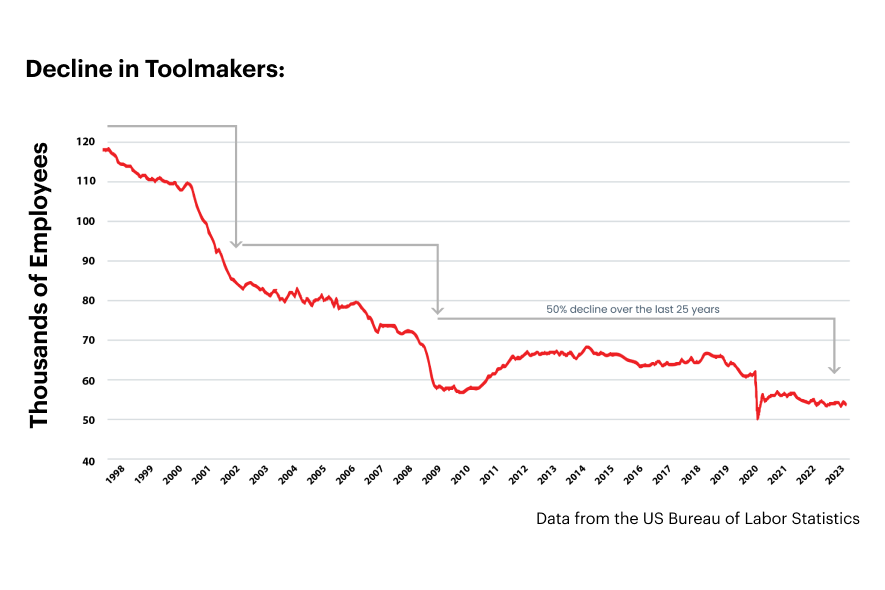Local manufacturers face mounting challenges — from supply chain disruptions and geopolitical uncertainties to rising costs and a shrinking skilled labor pool. Reshoring production is a common solution that is a win for manufacturers and consumers. In fact, some sectors report the greatest number of OEMs attempting to reshore in almost two decades1.
However, bringing back manufacturing doesn’t mean simply returning the processes of the past to the factories next door. The employment landscape has shifted. Traditional manufacturing jobs, perceived as repetitive, manual tasks with declining benefits, aren’t appealing to workers in service-driven economies2. The big problem for local manufacturers is that labor productivity in the manufacturing sector has declined over the past ten years3 despite some advances in automation technology.
This shift is especially critical in injection mold tooling, which remains a major bottleneck for mass production.
